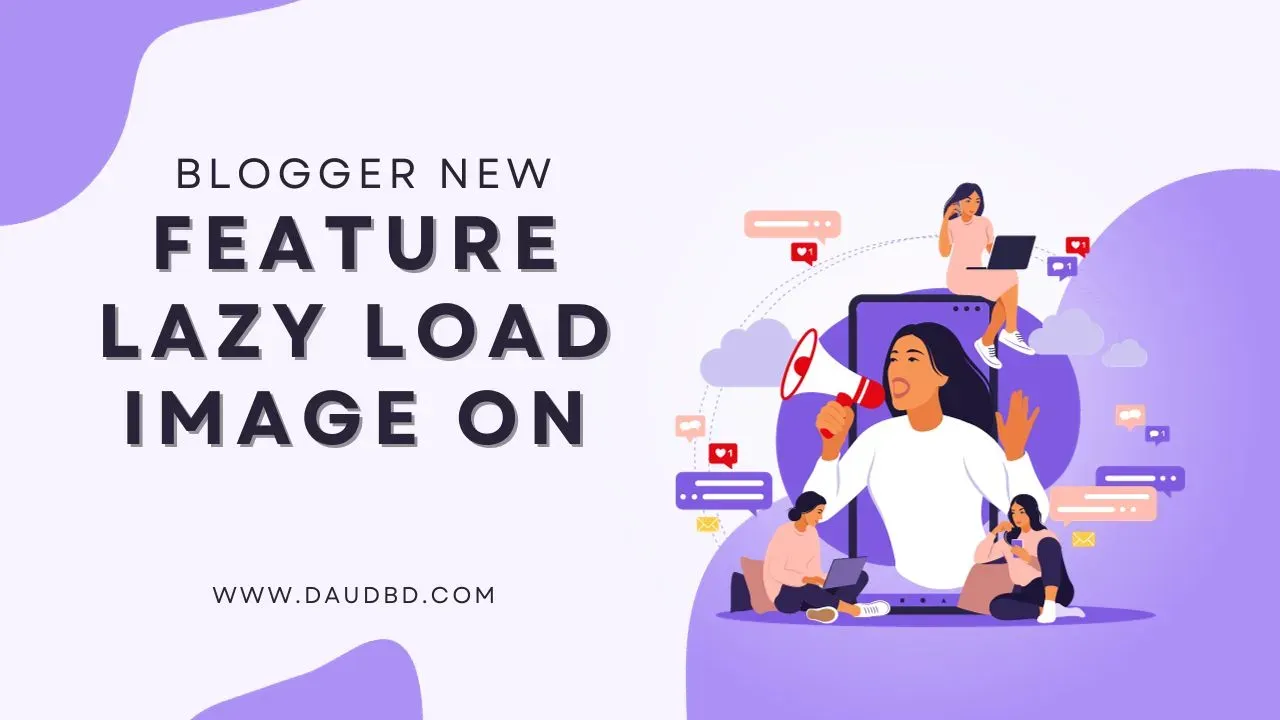Welcome To DaudBD Blog!
Today i will discussion blogger site new feature lazy load image.

|
| Lazy Load image individualy as the reader scroll Down to page high speed |
Default Lazy Load Image Feature
Certainly! Lazy loading images is a technique used in web development to improve website performance and user experience. Instead of loading all images on a webpage immediately, images are loaded as the user scrolls down the page or when they come into the viewport, which can reduce initial page load times and save bandwidth.
Here are some points to consider when discussing the implementation of lazy loading images as a new feature:
Performance Benefits: Lazy loading can significantly improve the initial loading speed of a webpage, especially on pages with many images. This can lead to a better user experience and improved SEO rankings, as search engines consider page speed as a ranking factor.
User Experience: Users will appreciate faster load times and smoother scrolling, as they won't have to wait for all images to load before interacting with the page. It also reduces the likelihood of users leaving due to slow loading.
Bandwidth Savings: Lazy loading reduces unnecessary bandwidth consumption by loading images only when they are needed. This can be especially beneficial for users on mobile devices or with limited data plans.
Implementation: Discuss the technical aspects of implementing lazy loading. This might involve using the loading="lazy" attribute in HTML or using JavaScript libraries like Intersection Observer to trigger image loading.
Accessibility: Ensure that lazy loading doesn't negatively impact accessibility. Images should still have appropriate alt text for screen readers, and the lazy loading behavior should be accessible for users with disabilities.
Testing and Performance Monitoring: Talk about the importance of testing lazy loading across different browsers and devices to ensure it works as expected. Implement performance monitoring tools to track the impact on load times and user experience.
Fallback for Non-Supported Browsers: Consider providing a fallback mechanism for browsers that don't support lazy loading, ensuring that all users can access the content.
Content Strategy: Determine which images should be lazy-loaded and which should be loaded immediately. Critical images, like logos or hero images, might load right away, while non-essential images further down the page can be lazy-loaded.
Future Scalability: Consider how this feature will scale as more images are added to the website. Will there be a need for image management tools or automation?
User Feedback: After implementing lazy loading, collect user feedback to ensure it's positively impacting their experience and address any issues that may arise.
It's very easy to install these lazy load image feature option on blogger site
Step 1: Go and login to the Blogger
Step 2: In Blogger Dashboard ، Go to Three Dot menu section
Step 3: Now click on the Next Settings icon
Step 4: Now scroll Down to post template Option
Step 5: On Lazy Load Image feature [on]

|
| Lazy Load image individualy as the reader scroll Down to page high speed |
Surely On Default Lazy Load Image Feature Blogger Dashboard
Related Posts
Overall, lazy loading images is a valuable feature for web development that can enhance performance and user satisfaction, but it should be implemented thoughtfully and tested thoroughly to ensure it works as intended.
